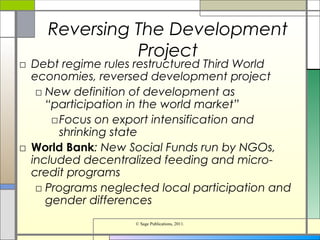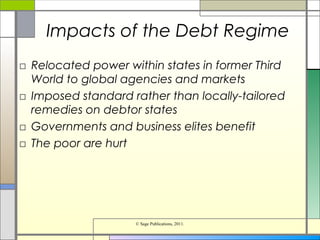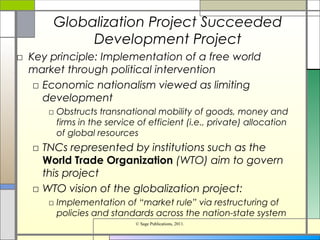1) The document discusses how the globalization project emerged to redefine development as participation in the global market led by institutions like the World Bank and IMF.
2) It overviews how structural adjustment policies in the 1980s reversed development goals and imposed austerity measures in debtor nations to prioritize debt repayment.
3) The impacts included rising poverty, cuts to social services, and weakened states as power shifted to global institutions and private corporations.































